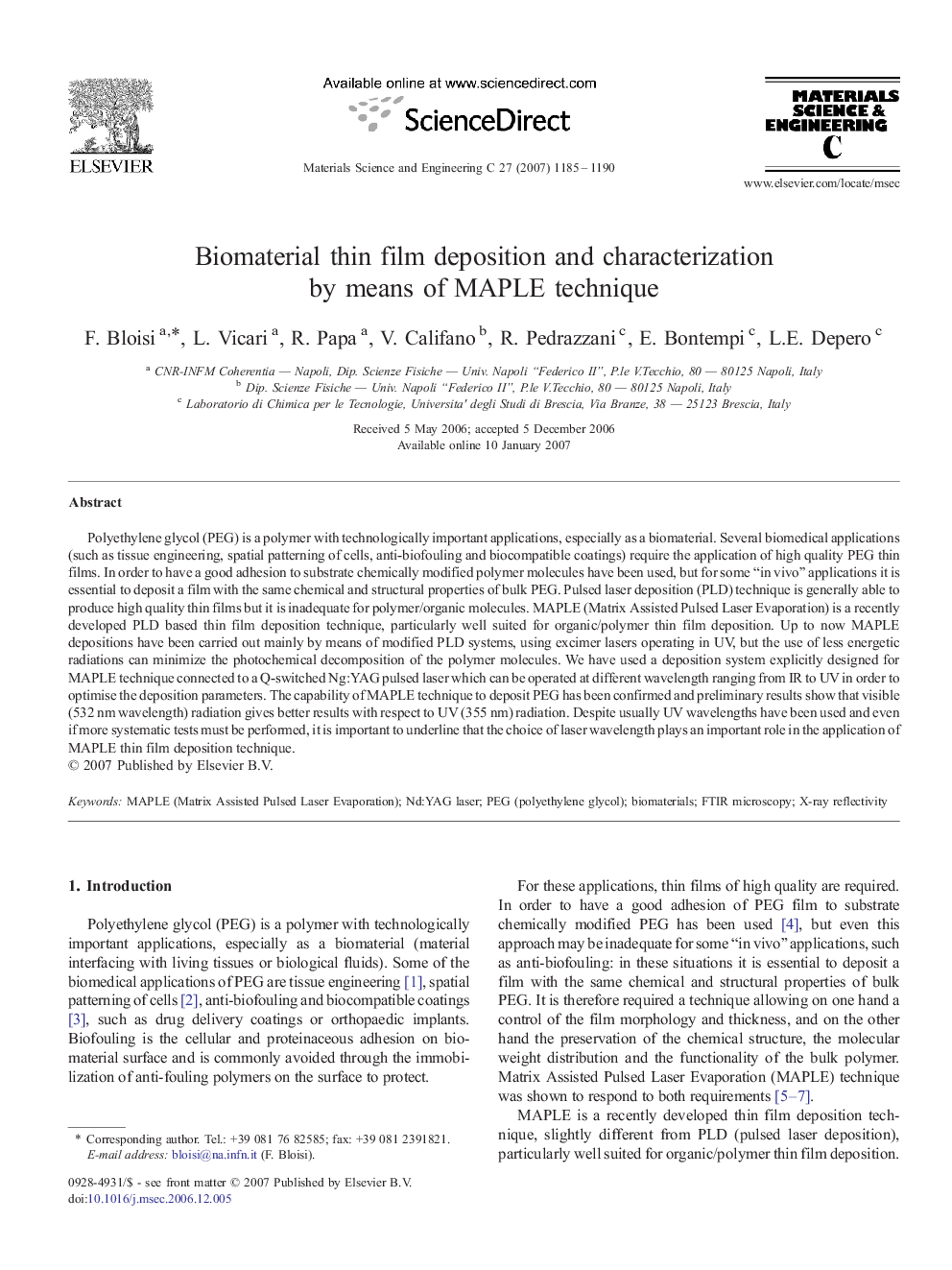| Article ID | Journal | Published Year | Pages | File Type |
|---|---|---|---|---|
| 7870812 | Materials Science and Engineering: C | 2007 | 6 Pages |
Abstract
Polyethylene glycol (PEG) is a polymer with technologically important applications, especially as a biomaterial. Several biomedical applications (such as tissue engineering, spatial patterning of cells, anti-biofouling and biocompatible coatings) require the application of high quality PEG thin films. In order to have a good adhesion to substrate chemically modified polymer molecules have been used, but for some “in vivo” applications it is essential to deposit a film with the same chemical and structural properties of bulk PEG. Pulsed laser deposition (PLD) technique is generally able to produce high quality thin films but it is inadequate for polymer/organic molecules. MAPLE (Matrix Assisted Pulsed Laser Evaporation) is a recently developed PLD based thin film deposition technique, particularly well suited for organic/polymer thin film deposition. Up to now MAPLE depositions have been carried out mainly by means of modified PLD systems, using excimer lasers operating in UV, but the use of less energetic radiations can minimize the photochemical decomposition of the polymer molecules. We have used a deposition system explicitly designed for MAPLE technique connected to a Q-switched Ng:YAG pulsed laser which can be operated at different wavelength ranging from IR to UV in order to optimise the deposition parameters. The capability of MAPLE technique to deposit PEG has been confirmed and preliminary results show that visible (532Â nm wavelength) radiation gives better results with respect to UV (355Â nm) radiation. Despite usually UV wavelengths have been used and even if more systematic tests must be performed, it is important to underline that the choice of laser wavelength plays an important role in the application of MAPLE thin film deposition technique.
Related Topics
Physical Sciences and Engineering
Materials Science
Biomaterials
Authors
F. Bloisi, L. Vicari, R. Papa, V. Califano, R. Pedrazzani, E. Bontempi, L.E. Depero,
